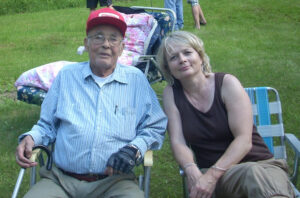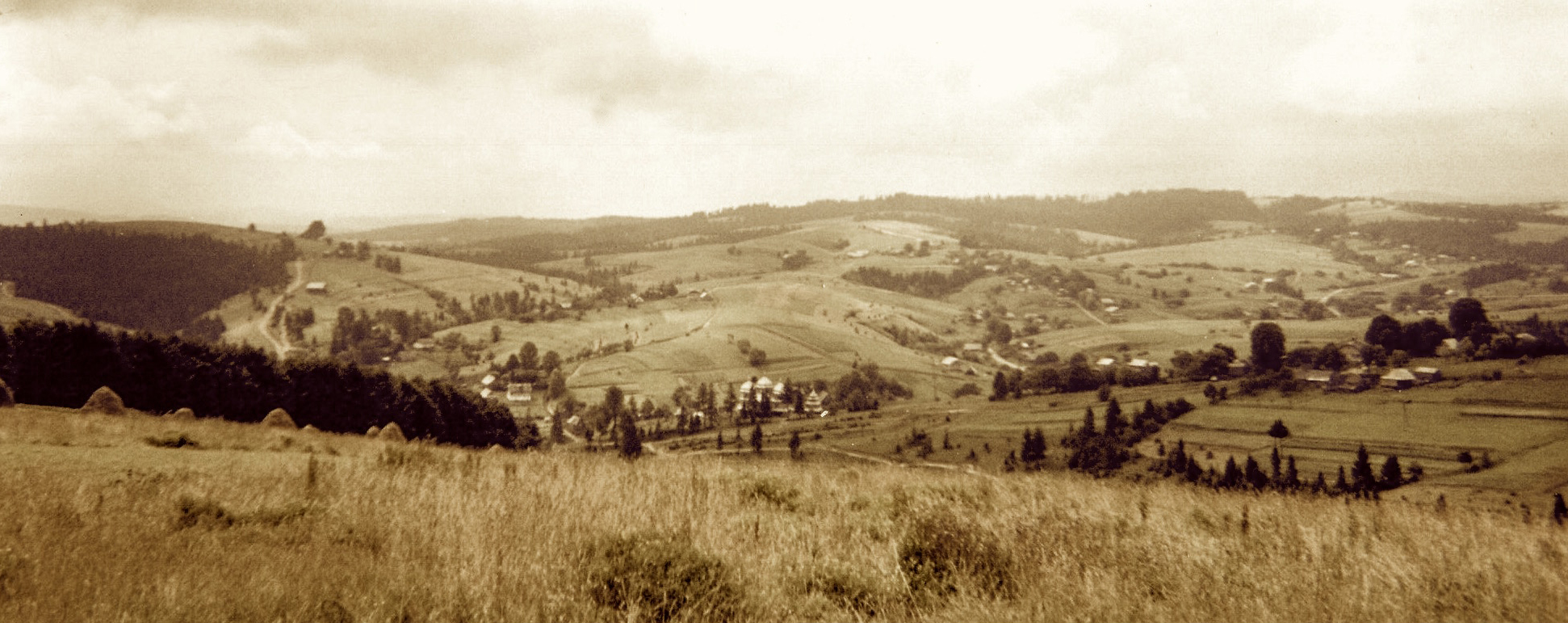I grew up knowing about being a Lemko, with designations such as Verkhovyntsi (Highlanders) and similarities with people of Appalachia who can trace their ancestral background from the large migration of Scotch-Irish. Lemko’s adaptive dialect, linguistic patterns, customs, folklore, fierce loyalty, love of family, the land, and traditions set them apart from other cultures. How can this be explained to the future generation searching for their roots?
Lemkivschyna was the place my father yearned to call home until the day he died. The way he always spoke of it connected me to the mountains, forests, lakes, and streams. Poetry, song, and the art of living with Nature reveal an extraordinary connection to the Carpathian Mountains, the source of the Dniester, Tisza, and Vistula Rivers. These rivers form a natural border between Slovakia and southern Poland, extending southward through Ukraine and into Romania.
My father’s village is Dudynce, near Sanok, along the Sian (San) River on the Curzon line. I imagine what it would be like to have had a very long history (centuries) of living in structured, insular communities along the Carpathian Mountains, according to traditions and rituals that create order. Life was seasonal, and survival depended on a good harvest and prudence for the unexpected present. The journey continues.
Dedicated to my tato

Julian “Levko” Kotlar 1924-2009 and Christina Kotlar Turchyn
Julian "Levko" Kotlar
Julian Kotlar was born on July 4, 1924, the seventh child and youngest son, to Iwan Kotlar and Maria Szajniak Kotlar in Dudynce, Lemkivschyna. He emigrated to the United States in 1950 and married Johanna Shepski (who predeceased him in 1998). Also known as “Levko,” he was an active member of diaspora organizations and the Ukrainian community, having served as president of the Organization for the Defense of Lemkivschyna (OOL), President of the local U.S. Chapter, and international (Canadian) of the Former Members of Ukrainian Insurgent Army (UPA).
He was vice-chair of the publishing committee of Litopys Chronicles of the Ukrainian Insurgent Army, UPA; member of St. Nicholas Ukrainian Catholic parish and its Senior Citizens Club; member of the Ukrainian Center; Ukrainian National Home and district representative of Branch 42 of the Ukrainian National Association, UNA. He died, age 85, at home on October 17, 2009.
Christina Kotlar Turchyn
I was a Visiting Scholar at the Columbia Harriman Institute Ukrainian Studies Program for the academic year 2006-07. War and Society in Eastern Europe– 1939-Present, examined the Second World War and its legacies – wartime’s ongoing powerful emotional and political immediacy– as a catastrophic defining moment in the history and politics of modern Eastern Europe. Thematically, the material ranged from the everyday life of the nonmilitary populations to the history and legacy of responses within the whirlwind of occupation, deportation, ethnic cleansing, and genocide. It covered the “lands between” Germany and Russia, including Ukraine and western parts of the Soviet Union, roughly identical with the former Polish-Lithuanian Commonwealth, the Baltic states, and part of the former Habsburg empire (minus Austria and the empire’s Italian possessions). I was armed with the family archives–letters, photos, bits and pieces of memory, and my father’s stories. Translating a little at a time, I’m writing an ancestral history, Dudynce Diaries– Ancestral Roots of a Lemko Village.
